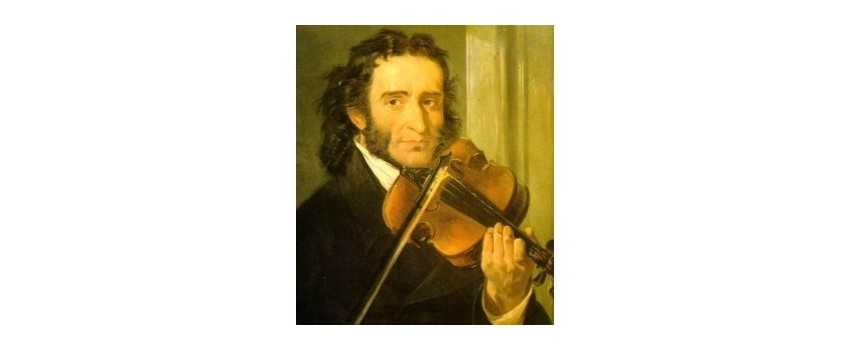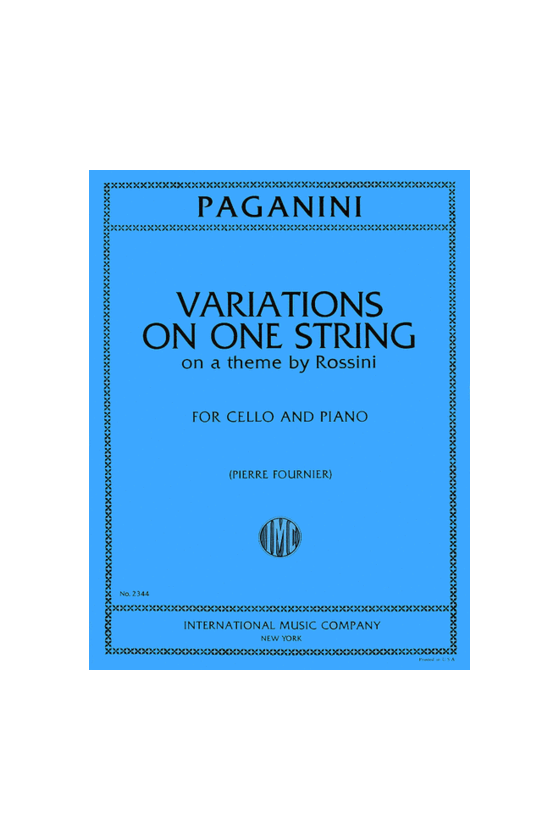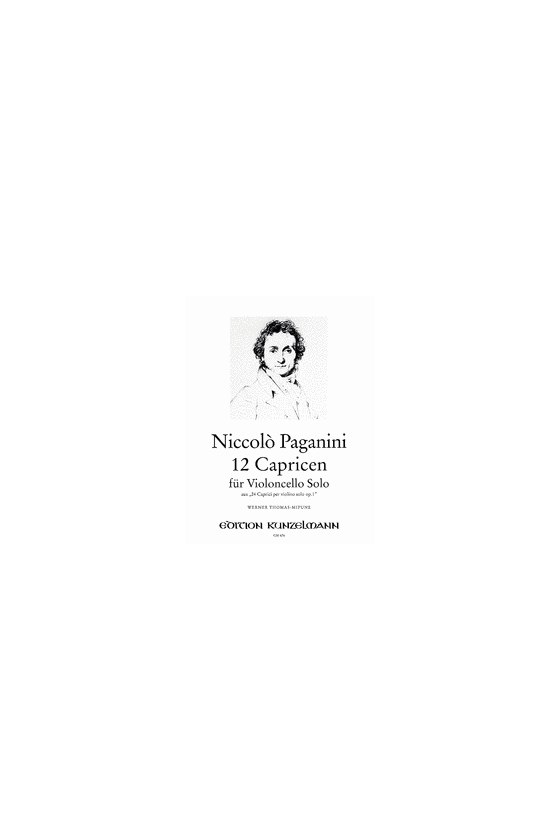Paganini, Variations On One String - On A Theme By Rossini For C
Paganini, Variations on One String - On a Theme by Rossini for C
Niccolò Paganini, born on October 27, 1782, in Genoa, Italy, was an extraordinary composer and violin virtuoso who left an indelible mark on the 19th-century music scene. His remarkable talent and innovative techniques revolutionized violin playing, making him a popular idol of the Romantic era. Paganini's life was filled with both triumphs and trials, and his virtuosity and showmanship captivated audiences across Europe. In this article, we delve into the fascinating journey of Niccolò Paganini, exploring his early years, rise to fame, musical contributions, and enduring legacy.
Early Years and Musical Education
Niccolò Paganini's musical journey began with his father, who recognized his son's talent and provided him with initial violin lessons. He later studied under the guidance of local violinist G. Servetto and the renowned Giacomo Costa. Paganini's exceptional abilities quickly became evident, and he made his first public appearance in 1793. Seeking further musical education, he studied with Alessandro Rolla and Gaspare Ghiretti in Parma, honing his skills and expanding his repertoire.
Early Success and Struggles
In 1797, accompanied by his father, Paganini embarked on a tour of Lombardy, where his reputation as a violinist flourished with each concert. Gaining his independence, he found himself succumbing to excessive gambling and engaging in romantic affairs. At one point, Paganini even pawned his beloved violin due to his gambling debts. Fortunately, a French merchant recognized his talent and lent him a Guarneri violin for a concert. This fortuitous encounter marked a turning point in Paganini's life.
The Capricci and Innovative Techniques
Paganini's most significant contributions to the violin world were his 24 Capricci for unaccompanied violin, composed between 1801 and 1807. These caprices showcased his unique technique and pushed the boundaries of violin playing. Paganini's compositions incorporated harmonics, pizzicato effects, and unconventional fingering and tuning methods. His technical innovations paved the way for future virtuosos, such as Pablo Sarasate and Eugene Ysaÿe, who sought to emulate his remarkable style.
Rise to Fame and International Tours
After reemerging as a violinist in Italy in 1805, Paganini's talent caught the attention of Napoleon's sister, Élisa Bonaparte Baciocchi, who appointed him as the director of music at Piombino. He embarked on a series of successful recitals across Italy, captivating audiences with his own compositions. In 1828, Paganini experienced a breakthrough in Vienna, followed by sensational performances in Paris and London in 1831. His tour of England and Scotland in 1832 propelled him to wealth and further solidified his status as a virtuoso.
Paris and the Symphony "Harold in Italy"
In 1833, Paganini settled in Paris and commissioned Hector Berlioz to compose his symphony "Harold en Italie." However, Paganini felt that the viola solo in the symphony was not challenging enough and ultimately decided against performing it. Despite this, Paganini's influence extended beyond his own performances, inspiring renowned composers such as Franz Liszt, Robert Schumann, Johannes Brahms, and Sergey Rachmaninoff.
The Legend and Controversies of Niccolò Paganini
Paganini's enigmatic personality and unconventional lifestyle contributed to the creation of a legend surrounding him. Stories circulated, depicting him as a Mephistophelean figure, rumored to have made a pact with the devil and even imprisoned for murder. These tales, although primarily fictional, added to the allure and mystique surrounding Paganini. Additionally, he was long perceived as a miser, but a closer examination reveals his desire for independence and his generosity towards struggling composers like Berlioz.
Paganini's Musical Legacy
Beyond his virtuosic performances, Paganini left behind a substantial body of work. His compositions include six violin concertos, with the first in D major being particularly popular, twelve sonatas for violin and guitar, and six quartets for violin, viola, cello, and guitar. Paganini's influence extended beyond the violin, shaping the development of orchestral and piano music. His technical innovations and captivating melodies inspired composers for generations to come. Themes from his Capricci served as a wellspring of inspiration for Liszt, Schumann, Brahms, and Rachmaninoff.
Paganini's Enduring Impact
Niccolò Paganini's life and music continue to captivate audiences and musicians alike. His unparalleled virtuosity, innovative techniques, and captivating compositions revolutionized violin playing and left an indelible mark on the Romantic era. Despite the controversies and legends that surrounded him, Paganini's legacy endures through his compositions and the influence he had on subsequent generations of musicians. His contribution to the world of music remains a testament to the power of individuality, innovation, and artistic expression.

Paganini, Variations on One String - On a Theme by Rossini for C
Boxed:
Sticky Header:
Sticky Add To Cart
Sticky Footer:
Font:



